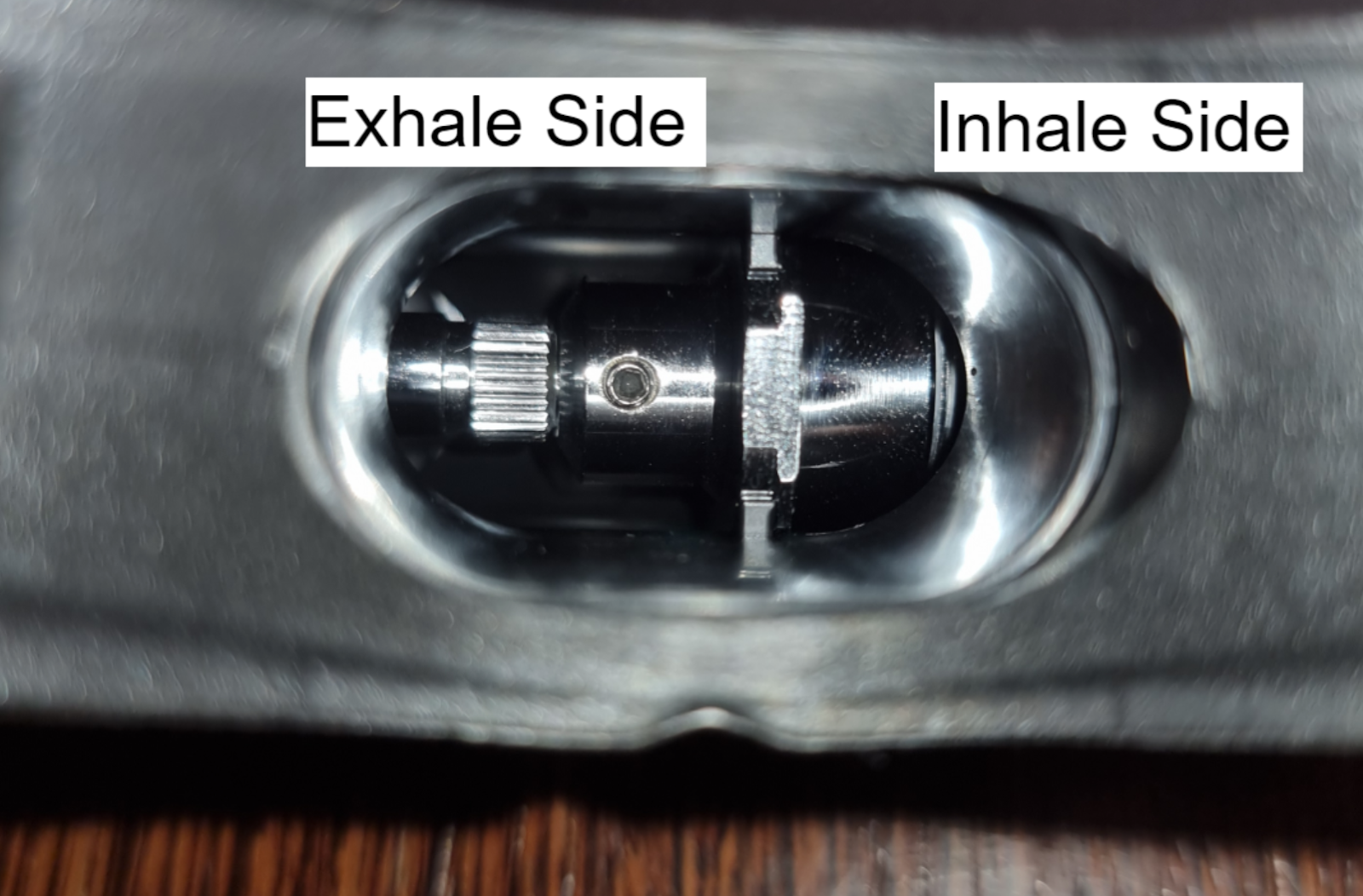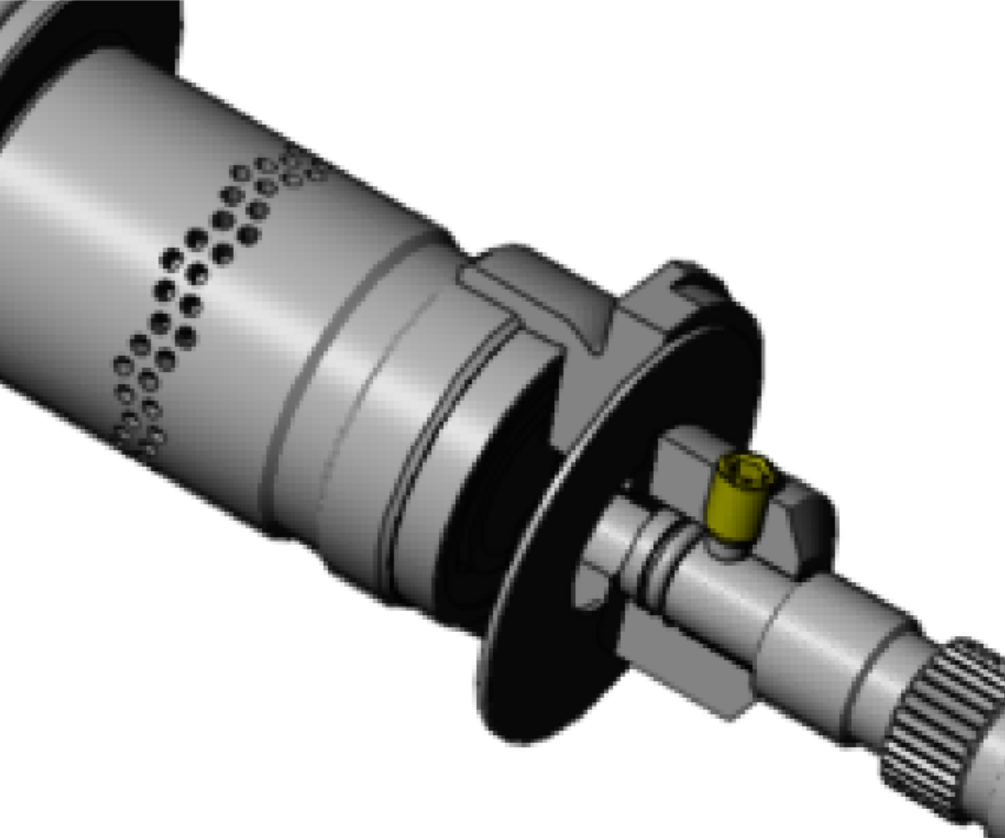Michelle Louise
Registered
- Coaxial Jetstream vs. non-coaxial Xstream
To my understanding the consequence of case geometry fault is that the distance from inhale diaphragm to exhaust must be ‘added’ to the initial (unsubmerged) minimum cracking pressure to ensure no free flowing in all positions. Coaxial diaphragm/exhaust as found in the jetstream,d400 etc solve this fault, so why did Poseidon move away from this with the xstream? Additionally the xstreams exhaust is deeper than inhale diaphragm in the normal diving position, I can’t think of any other second stage with this orientation (Maybe Poseidon Triton). What is the thinking behind this design choice?

- Valve housing nut hole

This nut that screws onto the main valve body to enclose the condom has two holes on the jetstream and early xstream, later versions had one hole removed with poseidon recommending older xstreams be upgraded.
“For regulators with serial numbers less than 310001 we recommend to offer the customer to replace the old type valve housing nut to the improved version with article number 4547. This will significantly reduce the inhalation effort.”
This nut segregates the inhale and exhale sides of the reg, forcing gas to make a 90° turn towards your mouth. Naturally this gas will bring with it some of the gas from the exhale side, lowering pressure there → venturi boost.
This hole/s in question lets some air through to the other side presumably to decrease the venturi effect.

So I am wondering, would plugging this remaining hole (maybe partially?) be a way to tune this second stage? You could plug one of them on the jetstream. The Atmosphere full face mask has some kind of a washer blocking this hole/s but I am not sure in what other ways that second stage differs to achieve it's positive pressure function.

- Reduction of venturi effect at depth
This is an excerpt from the NEDU evaluation of the Jetstream, proposing that venturi effect is reduced at depth due to decreasing pressure differentials between ip and ambient.
“Venturi Action
Figure 5 shows that flow resistance averaged over a breath begins to rise in the fashion of an orifice at ambient pressures of 6 atm absolute or more. We can speculate that the suction created by a second stage venturi is more pronounced at shallow depths than at deeper depths. The Poseidon Odin intermediate pressure was 145 psi above ambient. At 165 fsw, ambient pressure is 88.2 psi absolute. Therefore, intermediate pressure was 145 + 88.2 psi or 233 psi. The expansion of gas across the second stage orifice is therefore affected by a pressure drop from 233 psi to 88 psi, resulting in a 2.6 times expansion at 165 fsw. At the surface, the expansion ratio would be (145 + 14.7 psi) /14.7 psi or 10.9. Therefore, gas expansion is about four times greater near the surface than at depth. To the extent that venturi action is controlled by volume expansion, we would expect the induced venturi to be more vigorous at shallow depths than at deeper depths.”

I find this interesting, I have played around with intermediate pressures and have found that normal ips (10/11 bar) make my servo regs stutter in the shallows but breathe better 40m+ (cracking maybe a bit higher but subsequent gas delivery increases). I assumed it was more pressure = more gas but it could be increased venturi, maybe both. So I keep my primary first at 10 bar and backup at 8.5 bar and breathe from that in the shallows, usually breathing deco gas anyways. I may now experiment with modifying this small hole when diving resumes.
To my understanding the consequence of case geometry fault is that the distance from inhale diaphragm to exhaust must be ‘added’ to the initial (unsubmerged) minimum cracking pressure to ensure no free flowing in all positions. Coaxial diaphragm/exhaust as found in the jetstream,d400 etc solve this fault, so why did Poseidon move away from this with the xstream? Additionally the xstreams exhaust is deeper than inhale diaphragm in the normal diving position, I can’t think of any other second stage with this orientation (Maybe Poseidon Triton). What is the thinking behind this design choice?
- Valve housing nut hole
This nut that screws onto the main valve body to enclose the condom has two holes on the jetstream and early xstream, later versions had one hole removed with poseidon recommending older xstreams be upgraded.
“For regulators with serial numbers less than 310001 we recommend to offer the customer to replace the old type valve housing nut to the improved version with article number 4547. This will significantly reduce the inhalation effort.”
This nut segregates the inhale and exhale sides of the reg, forcing gas to make a 90° turn towards your mouth. Naturally this gas will bring with it some of the gas from the exhale side, lowering pressure there → venturi boost.
This hole/s in question lets some air through to the other side presumably to decrease the venturi effect.
So I am wondering, would plugging this remaining hole (maybe partially?) be a way to tune this second stage? You could plug one of them on the jetstream. The Atmosphere full face mask has some kind of a washer blocking this hole/s but I am not sure in what other ways that second stage differs to achieve it's positive pressure function.
- Reduction of venturi effect at depth
This is an excerpt from the NEDU evaluation of the Jetstream, proposing that venturi effect is reduced at depth due to decreasing pressure differentials between ip and ambient.
“Venturi Action
Figure 5 shows that flow resistance averaged over a breath begins to rise in the fashion of an orifice at ambient pressures of 6 atm absolute or more. We can speculate that the suction created by a second stage venturi is more pronounced at shallow depths than at deeper depths. The Poseidon Odin intermediate pressure was 145 psi above ambient. At 165 fsw, ambient pressure is 88.2 psi absolute. Therefore, intermediate pressure was 145 + 88.2 psi or 233 psi. The expansion of gas across the second stage orifice is therefore affected by a pressure drop from 233 psi to 88 psi, resulting in a 2.6 times expansion at 165 fsw. At the surface, the expansion ratio would be (145 + 14.7 psi) /14.7 psi or 10.9. Therefore, gas expansion is about four times greater near the surface than at depth. To the extent that venturi action is controlled by volume expansion, we would expect the induced venturi to be more vigorous at shallow depths than at deeper depths.”
I find this interesting, I have played around with intermediate pressures and have found that normal ips (10/11 bar) make my servo regs stutter in the shallows but breathe better 40m+ (cracking maybe a bit higher but subsequent gas delivery increases). I assumed it was more pressure = more gas but it could be increased venturi, maybe both. So I keep my primary first at 10 bar and backup at 8.5 bar and breathe from that in the shallows, usually breathing deco gas anyways. I may now experiment with modifying this small hole when diving resumes.




